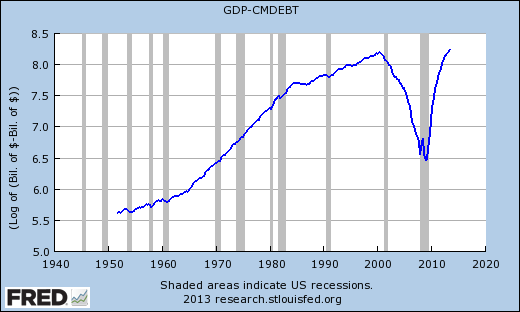Well, ya know, we're all talkin bout it now, inequality, as if we were always in the game, just waitin for someone to listen...
SRW is on the case:
I have no idea whether inequality is the “defining challenge of our time”. That’s a meaningless trope. But Klein takes the phrase from a speech by President Obama and turns it into a question in order to knock inequality down a few pegs from the economic priority list.He does a very dishonest job of it.
SRW quotes Ezra Klein:
Economist Jared Bernstein has been worrying about inequality since way before worrying about inequality was cool.
SRW doesn't like that, but I'm sympathetic. Inequality has become a "cool" topic lately. (See my opening line.) What fascinates me most about all of this is the rapidity with which inequality moved from side issue to center stage. Oh, it'll last a month or two, I expect, then fade away again.
In a footnote, his update history, SRW adds:
Added context that the phrase “defining challenge of our time” comes from President Obama’s speech, and reworked that sentence.
I finished the read and went to empty the dishwasher with that footnote still in my head. Decided that the attribution needs to be clarified. Here's what President Obama said on 4 December:
So the basic bargain at the heart of our economy has frayed. In fact, this trend towards growing inequality is not unique to America’s market economy; across the developed world, inequality has increased. Some -- some of you may have seen just last week, the Pope himself spoke about this at eloquent length.
Important to get the etymology right. The Pope made inequality a pop topic.
(To be sure, SRW does put Pope Francis and concern about inequality together in the same sentence, in his earlier post.)

At the very bottom of the "all downhill" thing, we have the following:
James Pethokoukis at AEIdeas: Study: No economy in the world rewards smart, skilled workers more than America’s
"A new study adds another interesting wrinkle to the debate about income inequality in the United States," Pethokoukis writes:
I find particularly interesting the finding that (a) the return to skills is highest in America and lowest in Nordic-land, and (b) returns are higher in economies with more open, private-sector based labor markets. Wouldn’t this seem to argue that higher US inequality — based on pre-tax, pre-transfer market incomes — reflects 21st century market forces rewarding ability rather than some sort of breakdown in social norms?
Man, does he really think our exaggerated income inequality is just reward for ability? But then, it wouldn't be the first time some asshole said people are poor because they deserve to be poor.
Pardon my French. What offends me most in all of that is that Pethokoukis ignores the growing extremes of income inequality, which (come to think of it) mirror the growing extremes of political polarization in this country today.
The second bottom-of-the-barrel post on income inequality comes from Don Boudreaux at Cafe Hayek: A “Barrier” to Reducing Income Inequality??
Bourdeaux quotes from an AP story:
Fully 20 percent of U.S. adults become rich for parts of their lives, wielding outsized influence on America’s economy and politics...
The new rich have household income of $250,000 or more at some point during their working lives, putting them — if sometimes temporarily — in the top 2 percent of earners….
The new research suggests that affluent Americans are more numerous than government data depict, encompassing 21 percent of working-age adults for at least a year by the time they turn 60. That proportion has more than doubled since 1979.
Mmm, more than doubled since 1979. That's a result of supply side economics. And he tries to make it sound good, but it's just increasing income polarization. You know: inequality.
Boudreaux writes:
If I’m reading this report correctly (and if the reporter has interpreted the data correctly), fully 20 percent of Americans are, for at least some portion of their working lives, in the top two percent of income earners in America...
... these people (the “new rich”) are themselves, each and everyone of them, personally working at – and succeeding at – reducing income inequality.
Yeah, no. Increasing the extremes of income disparity is not the same as "reducing income inequality."
Unbelievably, Boudreaux adds:
... if the middle-class in America is disappearing, it’s chiefly because more and more Americans are becoming rich.
Yeah, yeah, this is just complete idiocy. And wouldn't you know it, Boudreaux links that particular excerpt to the inimitably bad Mark J. Perry. At the link (which you won't get from me) Perry shows this graph:
The graph shows percent of population grouped within some arbitrary divisions. If instead of showing population it showed the amounts of money received by those arbitrary populations, the dark blue segment on the right would extend increasingly far to the right as the decades go by. But of course Perry fails to show that graph.
Bottom of the barrel, bud.


.png)

.png)























.png)
.png)
.png)
.png)
.png)
.png)
